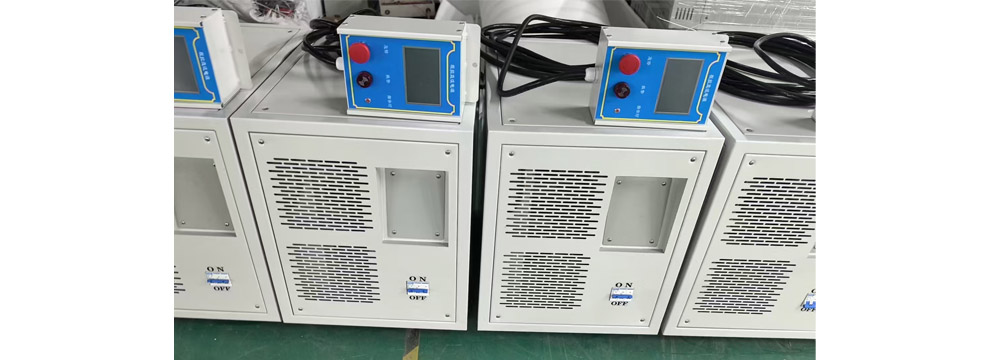An adjustable power supply (ADPS) utilizes high-frequency modulation technology to regulate voltage and current over a wide range, supporting an adjustable output voltage of 0-50V DC. Its applications include industrial control, communications, and scientific research, providing dynamic power support for high-load components.
1. What is the definition of an adjustable DC power supply?
An adjustable DC power supply provides variable output voltage or current and can be categorized into three common types: locally adjustable, remotely adjustable, and programmable. Local power supplies have built-in potentiometers for adjustment, remote power supplies have built-in remote potentiometers for adjustment, and programmable power supplies offer analog remote voltage regulation and can be adjusted via an RS232 interface.
2. What are the reasons for using an adjustable DC power supply?
A DC power supply with the ability to operate continuously at full load for extended periods of time is suitable for engineers in laboratory R&D, production line testing, and quality control. It is particularly powerful for component burn-in.

3. Can an adjustable DC power supply be manually adjusted if the digital interface or computer fails?
A DC power supply has a built-in local adjustment potentiometer. If the interface fails, the operator can simply add a jumper to restore manual control.
4. How does the current adjustment function on an adjustable DC power supply?
When using a constant voltage or constant current adjustable DC power supply, no current is output if no load is connected. When using an adjustable DC power supply, you should first set the DC voltage to an approximate value based on the rated voltage of the load. In most cases, this adjustable DC voltage is used to vary the voltage, and varying the DC voltage also varies the current within a certain range.
How does the current adjustment of an adjustable DC power supply work?
According to Ohm's law (I = U/R), fine-tuning the current also has a range.
This question likely concerns so-called constant voltage and constant current sources, which can be adjusted based on both current and voltage. However, the output voltage and output current must be set separately.
For example, let's set the output voltage to 12.6V at 1.8A:
For specific operation, please first turn on the power supply and test the no-load voltage. The digital display and two buttons are used to display and adjust the output voltage. One of the two knobs is for coarse adjustment, and the other is for fine adjustment. Turning the knobs should allow the voltage to continuously vary from 0 to the maximum value. After confirming that the voltage regulation is functioning properly, you can adjust the current in the next step.
When adjusting the current, the output terminals must be short-circuited. To prevent power supply failure, first reduce the voltage to approximately 2V (but not to 0, as this will result in no current output). Then short-circuit the power supply's output terminals. The voltage on the voltmeter will drop sharply, approaching zero volts, and the ammeter will display a current value. Then, adjust the two current regulators on the right side to set the current to 1.8A. Then, disconnect the positive and negative terminals of the output connector to end the short-circuit. The current will cease, and the voltage will return to its pre-adjustment state.

Adjusting the tension is relatively simple. Simply adjust the two knobs to set the voltage to 12.6V.
If the current and voltage remain unadjustable after following the above steps, the power supply is faulty. Excessive wear on the potentiometer is common and can be resolved by replacing it with a component of the same specification. If there are other errors, the situation becomes more complex and can only be analyzed on a case-by-case basis.
In passing, this power supply has the ability to achieve constant current or constant voltage. This is not a malfunction of the power supply itself, but rather is determined by Ohm's law. For example, with the 12.6V and 1.8A listed above, when the load connected to the power supply is low power and the current does not reach 1.8A, the power supply output is in a constant voltage state. From 0 to 1.8A and 12.6V, the voltage remains constant, and the current varies with the load, but constant current cannot be achieved.
If we try to increase the output voltage further, you will find that the voltage cannot be increased until the current reaches 1.8A. This is because the power supply enters a constant current state.
However, when the charging power increases, the current exceeds 1.8A, for example, to 1.8A or greater. By connecting a high-performance 6Ω resistor, according to Ohm's law (U/R = 1), 12.6V ÷ 6Ω = 2.1A. Since the current is set to 1.8A, the power supply output voltage becomes active at 10.8V (1.8A x 6Ω). It decreases to meet the set current requirement. This shows that it is impossible to simultaneously achieve constant current and constant voltage. When the current is constant, the voltage is not constant, and when the voltage is constant, the current is not constant. This constant current function is very useful when measuring LED light sources. For example, when measuring a 1W LED, the current can be set to 0.3A and the voltage to 4-5V (slightly above VF). If the voltmeter reads 3.25V, this is the VF value of the LED. This is convenient for sorting and filtering light sources or LEDs.
When the 220V power supply is normal, a zero current indicates a power supply failure. Often, a long adjustment period for an adjustable potentiometer may indicate a poor connection. If this still does not work, replace it with a new one and try again. If this still does not work, it indicates a problem with the voltage regulator, and adjustments can be made to the voltage stabilization circuit.
Share our interesting knowledge and stories on social media














